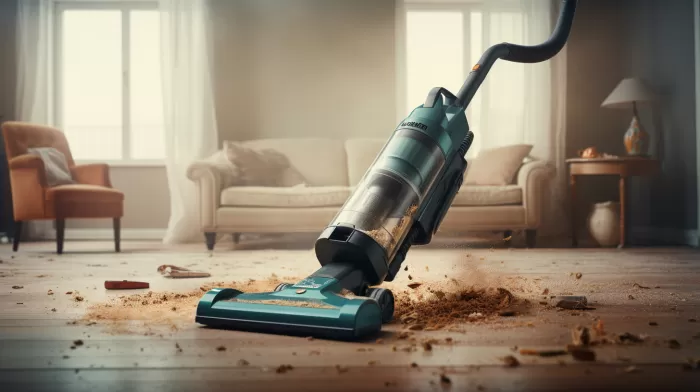Did you know that vacuuming is not only one of the most common household chores, but it can also expose us to harmful pathogens that could prove deadly? Researchers at the University of Queensland and Laval University in Canada have discovered that vacuum cleaners can lift dust containing harmful bacteria and mold into the air which can lead to adverse effects in allergic people, infants, and individuals with compromised immunity systems.
Vacuuming and Antibiotic Resistance
What’s more alarming is that these microorganisms possess resistance genes for five commonly used antibiotics, as well as the Clostridium botulinum toxin gene. The scientists warn that the dust found indoors could act as a vehicle for infant botulism infection that can have severe consequences, including sudden infant death syndrome, according to previous research.
Without any quantitative data on antibiotic resistance gene emission while vacuuming, the observed emission rates for bacteria might suggest that the genetic content of these bacterial cells, including antibiotic resistance genes, can contribute to indoor bioaerosol exposure.
How to Protect Yourself and Your Family
So, what can you do to minimize the health risks associated with vacuuming? Here are a few tips to keep in mind:
- Ventilation: Open the windows and ensure proper ventilation when vacuuming to minimize the risk of airborne microorganisms spreading throughout your home. Fresh air circulation will help to disperse the allergens and bacteria present in dust particles.
-
Keep Vulnerable Individuals Away: People with allergies, infants, and those with compromised immune systems, as well as the frail and elderly, should stay out of the room when vacuuming is in progress. These individuals are more susceptible to the harmful effects of bacteria and mold.
-
Use a Vacuum with a High-Efficiency Particulate Air (HEPA) Filter: These filters are specifically designed to trap airborne particles and allergens more effectively than standard vacuum filters. HEPA filters can capture particles as small as 0.3 microns, effectively reducing the amount of bacteria and mold released back into the air. You can learn more about HEPA filters from the United States Environmental Protection Agency.
-
Change Vacuum Bags and Filters Regularly: Over time, vacuum bags and filters become less effective at trapping allergens and bacteria. It’s essential to replace them as per the manufacturer’s recommendations, or even more frequently in case of heavy use or if you have pets.
-
Clean Your Vacuum Cleaner: Just like any appliance, vacuum cleaners need regular maintenance to function optimally. Ensure that you regularly clean hoses, attachments, and other components to minimize the buildup of dust and bacteria.
-
Vacuum at the Right Time: If you or someone in your household has severe allergies, it’s best to vacuum when there’s no one around. Additionally, vacuuming during periods of low humidity can help to reduce the re-suspension of allergens into the air, as dust particles are more likely to clump together when there’s moisture in the air.
-
Opt for Hard Surfaces: If possible, consider replacing carpets with hard surface flooring like wood or tile. Doing so will eliminate the need for vacuuming altogether. You can wipe away dust with a damp cloth instead, significantly reducing the risk of indoor bioaerosol exposure.
By following these simple yet effective tips, you can better protect yourself and your family from the potential health risks associated with vacuuming. Practicing good indoor air hygiene and being mindful of the spaces we inhabit can go a long way in safeguarding our well-being and maintaining a healthy living environment.



